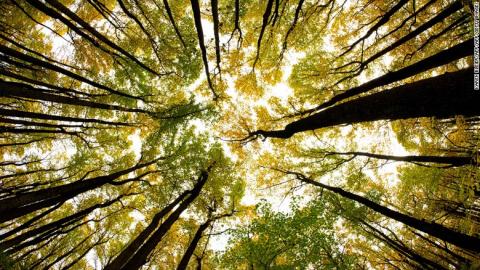
Nature might not be all about a ruthless "survival of the fittest". Research suggests that trees don't just compete for survival, but also cooperate and share resources using underground fungi networks.
"A forest has an amazing ability to communicate and behave like a single organism -- an ecosystem," Suzanne Simard, an ecologist at the University of British Columbia, told CNN.
Simard studied how, over the summer, shaded fir trees receive carbon from sun brushed birch trees, while in autumn the opposite happens -- birch trees receive carbon from fir trees as they start to lose their leaves. This exchange takes place through an underground "mycorrhizal network," a symbiotic association between a fungus and the roots of its host plant.
The fungi and the trees are in a mutually beneficial relationship: the fungi cannot photosynthesize, as they have no access to light and no chlorophyll. So they get a type of sugar produced in photosynthesis and carbon from the trees.
In return for sugar and carbon, fungi release nutrients such as phosphorous and nitrogen, as well as water, to the trees. It's a win-win.
Furthermore, the fungi will connect one tree to another through their network, which allows them to defend themselves more effectively.
Date:
Wednesday, February 8, 2017

